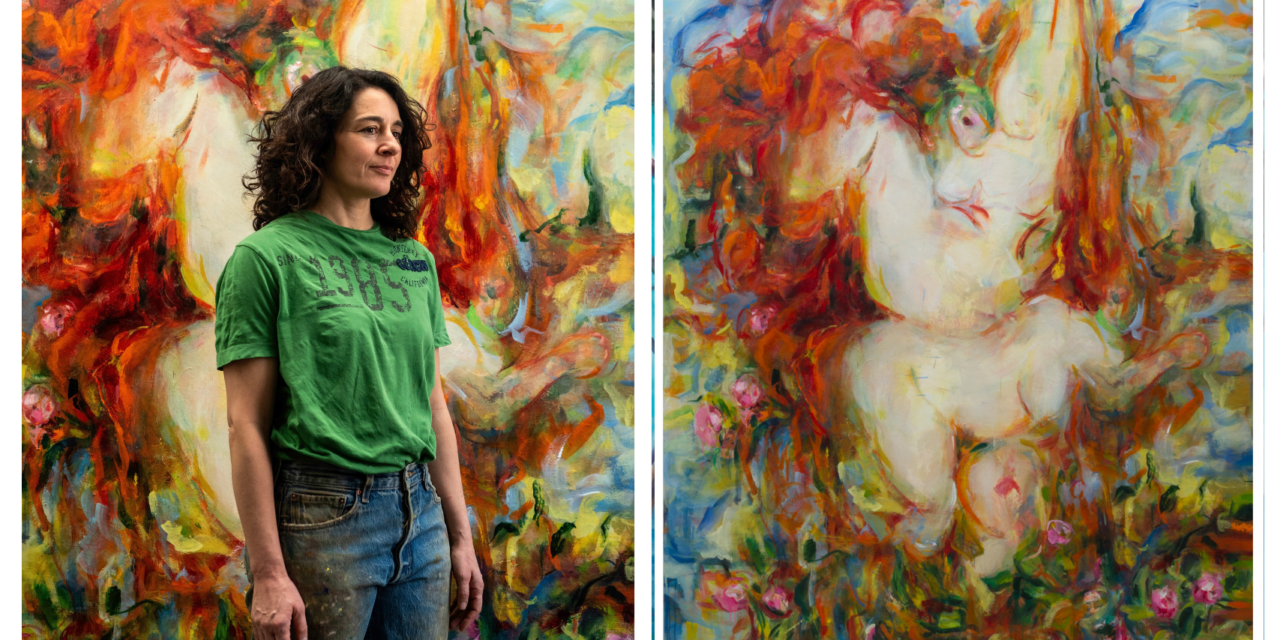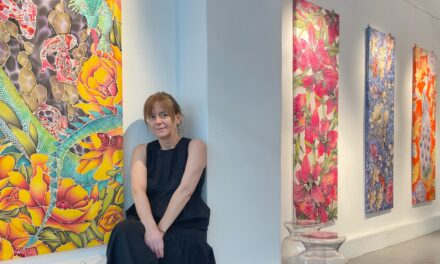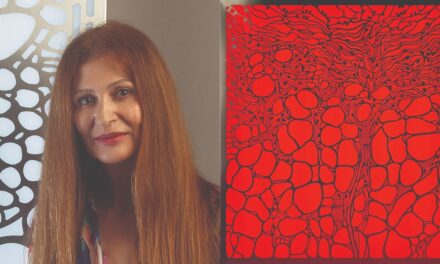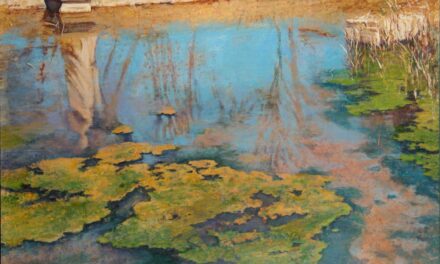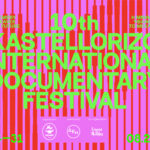Visual artist Katerina Papazissi presents her solo exhibition A dancefloor of one’s own at the Ileana Tounta Centre for Contemporary Art. Inspired by the Renaissance, Baroque and Expressionism, her art reintroduces academic painting in contemporary terms. Blurring the boundaries between representation and abstraction, she invites the viewer to explore the contradictive, volatile and irrational aspects of society and life. Papazissi’s idiosyncratic perspective focuses on urgent challenges, adversities and their various ramifications. Gender, sexuality, fantasy, desire and power are key features in her art.
Katerina Papazissi is an Athens-based visual artist. Her art is rooted in painting and expands to sculpture and installation. It explores the body as a fluid materiality through a dialogue with the history of art and contemporary culture. Her first studies were in Social Psychology and Media at the London School of Economics. She went on to study at Central Saint Martin’s College, London, (MA in Design Studies) and at the Athens School of Fine Arts (BA, Integrated MA, in Painting).
Katerina Papazissi talks to Greek News Agenda* about her artistic themes, concerns and narratives.
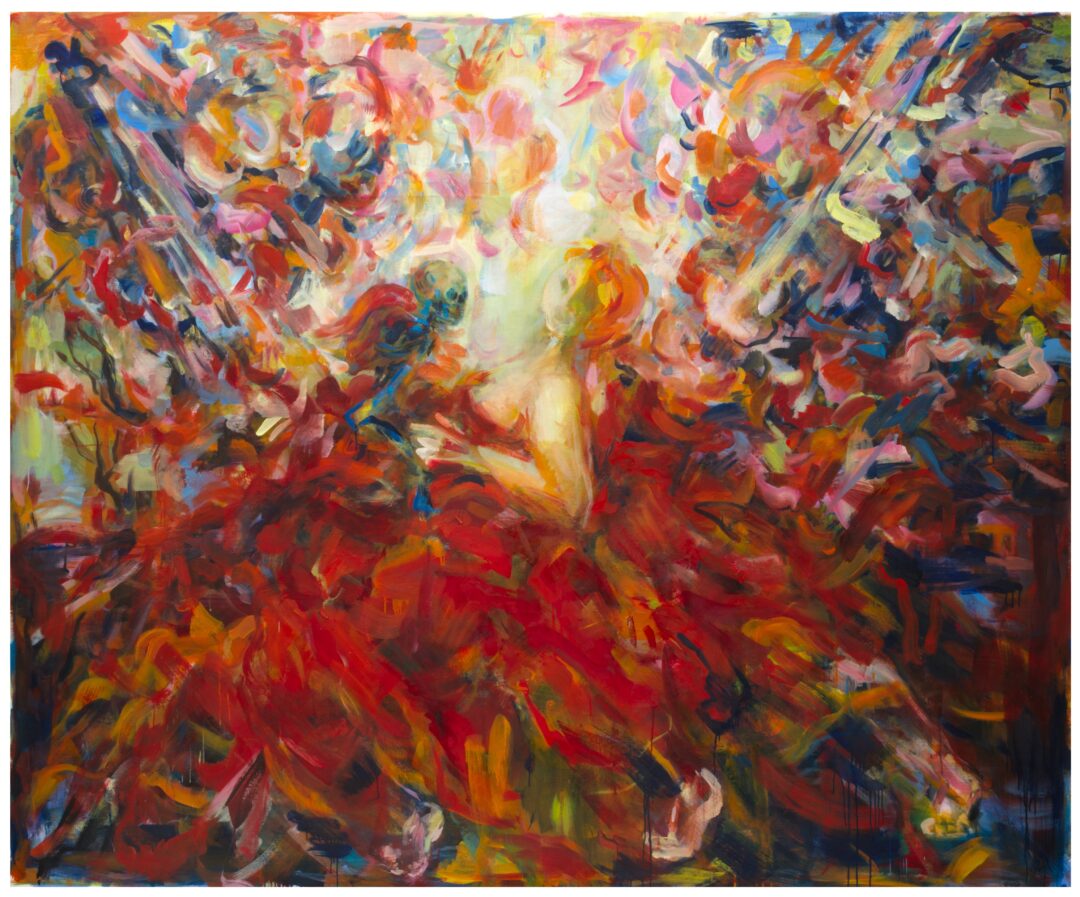
The title of your exhibition directly refers to Virginia Woolf’s famous essay. How does this story relate to your work and contemporary society?
The title A dancefloor of one’s own encapsulates the diverse themes interweaving in my work. Ιt points to corporeality, movement, and the colorful play of light and darkness, as on a dancefloor, that characterize it. Referring to Woolf’s essay A Room of One’s Own, it hints at the underlying subject of female and artistic emancipation. In the body of work presented in the exhibition, figures, often female figures sometimes not easily categorized in terms of gender, are presented in a state of continuous flux, transforming the narrative of classical paintings.
The new narratives that emerge liberate the female figure from the fixed, mostly passive roles in which they are portrayed. The title also points to the importance of the artist’s studio as the site of the transformation of reality. In her essay, Woolf also states that what a woman needs to make art (literature in her case) is a room of her own and a monthly stipend. For me, this is true not only for women but also for all artists. We need the time, space, and resources to work unburdened by the need to make a living, which takes enormous energy, and we need society to provide for this.
Women artists are more represented in the contemporary art world. However, perhaps this reflects more an economic factor, the need for newer markets and unpaid labor. It is arguable whether women are indeed considered to be of equal artistic ability as their male colleagues. Their works still fetch lower prices at auctions and are still labeled ‘feminine’. Women artists have always been underrepresented. Strangely enough, their larger exposure in recent years has coincided with the growing demands of artists to be paid for their work. I cannot help thinking that men are more likely to refuse to work unpaid while women, eager to, at last, make themselves visible, are less, and this is also one of the reasons why the market has opened up to female artists. This is of course only a tentative thought, not backed by any research that I know.
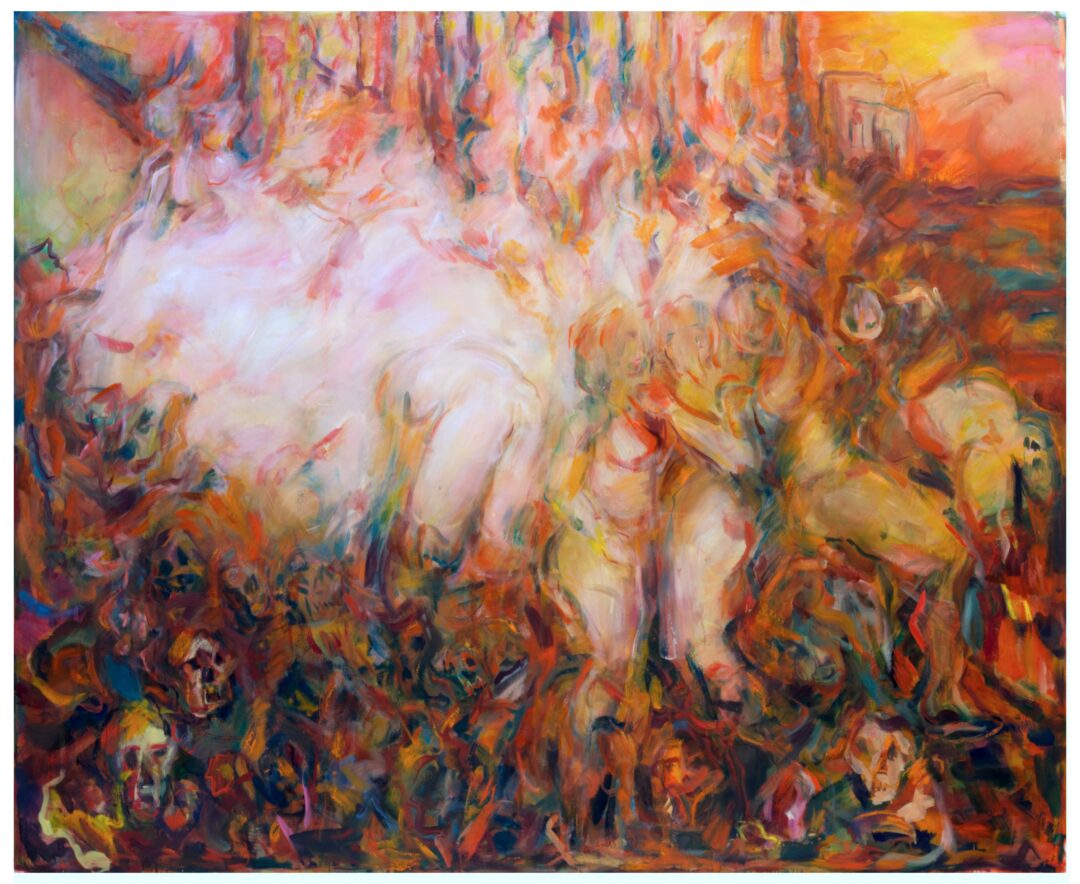
Which artistic movements have been incorporated into your work?
I have been influenced by various movements, artists and artworks, both classical and contemporary, and also by more popular forms of art such as comics. Mostly by Expressionism and the way it made visible the inner world of the human psyche, opening a view to our wild nature. Also by Abstract Expressionism, for making the space of the canvas the site of the action of the artist’s body. The way I use color owes a lot to Impressionism. Surrealism’s focus on the dark side of our unconscious has also been formative. I study works of the old masters, especially Baroque and Romantic artists, to learn about composition and the communication of human passions. I also look closely at the work of contemporary painters, especially women who work in a painterly, expressive, gestural manner. Perhaps the work of art that has mostly inspired me is The Fall of the Rebel Angels by Rubens. My encounter with this painting and the way it portrays the mass of the bodies of the angels as a maelstrom of flesh has formed my artistic language and my approach to the figure.
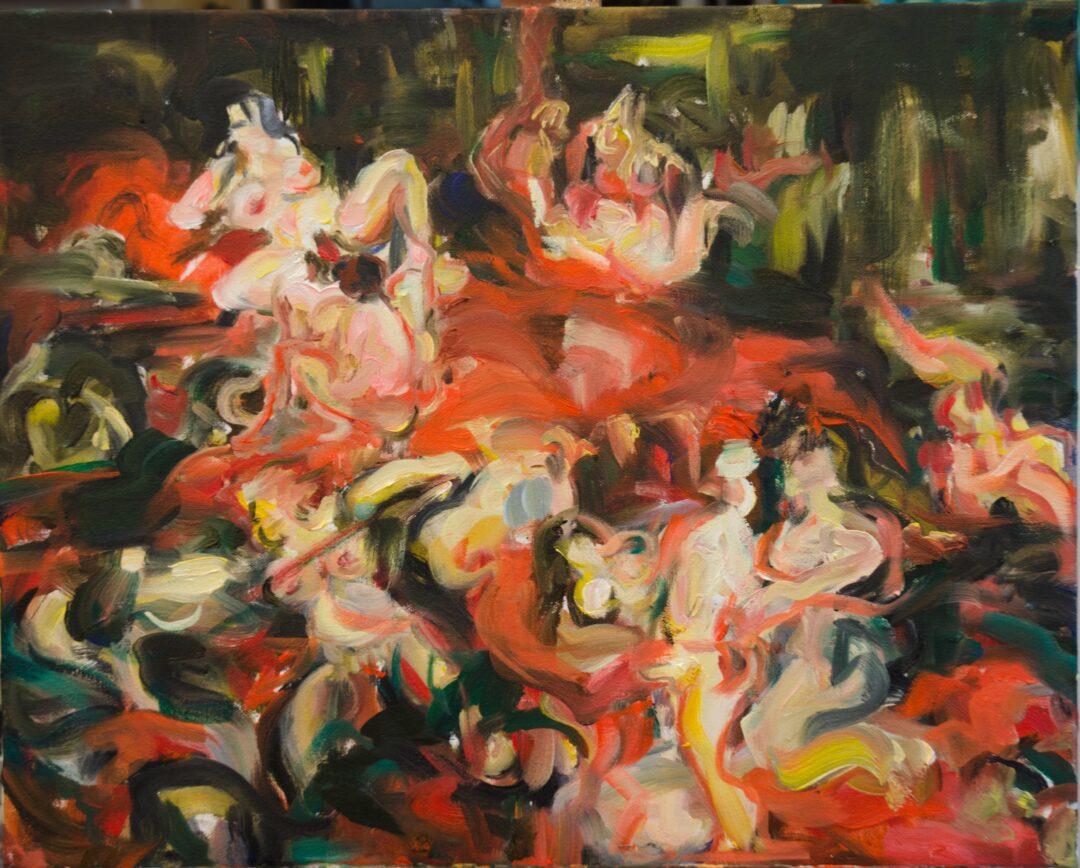
Which are the main issues of concern for you as an artist that you aspire to communicate to the public?
How do I make visible what is invisible? How do I discover feelings, passions, and forms, that lie unseen? How can the image be the mirror, the site for the inner world of emotions and the dark side of our nature to appear? How can it be the mediator between the inner world and outside reality? We exist as part of this world. What we are is not separate from the environment and other living beings. However, we see so much hate and strife around us. I am intrigued by the inner, dark world of emotions, passions, and the obscure aspects of being, that cause this. The wild nature that civilized man has always attempted to tame, through the various structures and institutions he has created. I seek ways to liberate and make visible these aspects of being, letting emotion and imagination run wild with my colors and forms. Perhaps this can be a release, a way out. I am concerned about the irrationality of death, and the affirmation of life against it.
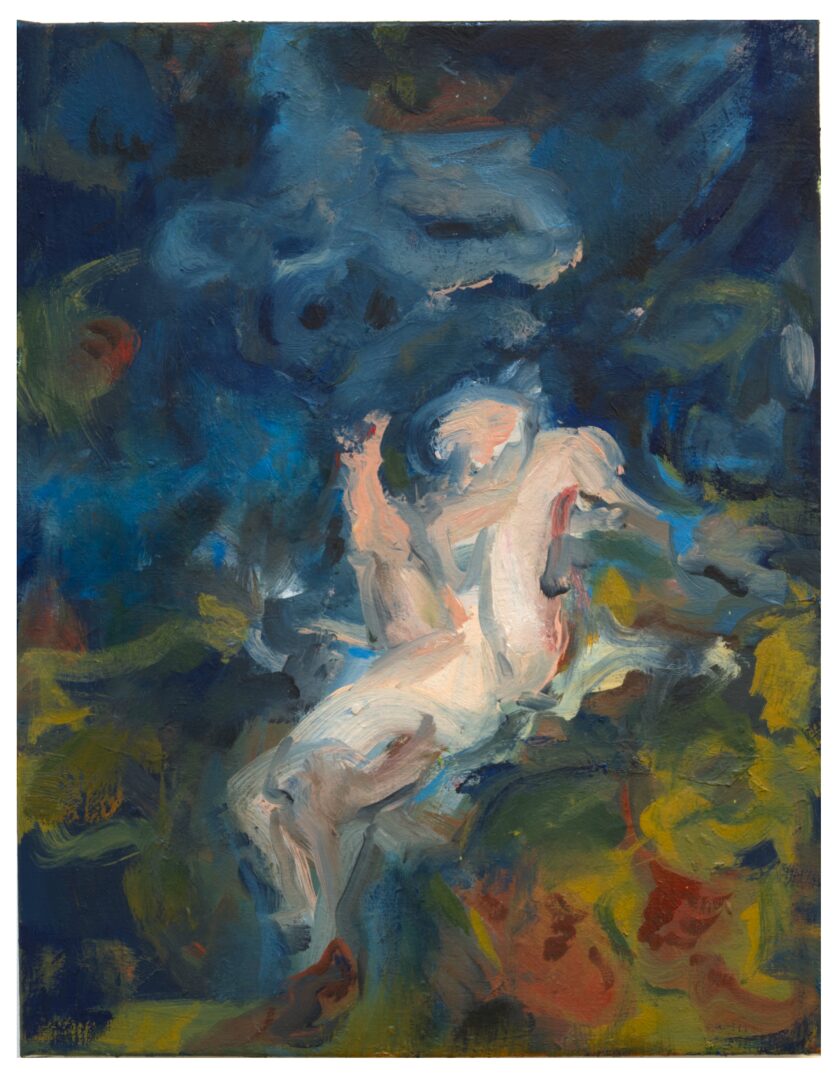
What is the artist’s role in our society? What is the target group of art in Greece?
I do not believe there is one role for the artist. Different artists can have different roles, such as entertainers, philosophers, preachers, educators, and decorators. I believe that what they have in common is that their work is an offering to society. I believe art is made first for communicating the artist’s inner world, but this opens up to the greater society, when viewers recognize their own emotions, passions, and thoughts, in the works.
Art is nourishment for the soul. It is sometimes the only way to express certain emotions and shed light on certain situations. People connect to themselves and others through art. As far as Greece is concerned, unfortunately, there are not as many people interested in visual art as I see in other countries, although I find that many people are interested in theater. One thing that plays a major part in this is education. We do not educate children to appreciate visual art. Arts education has been removed from high school. It is as if society tells us it is not necessary. I want to see the Greek state, and society, in turn, give art the status it deserves and recognize it as vital.
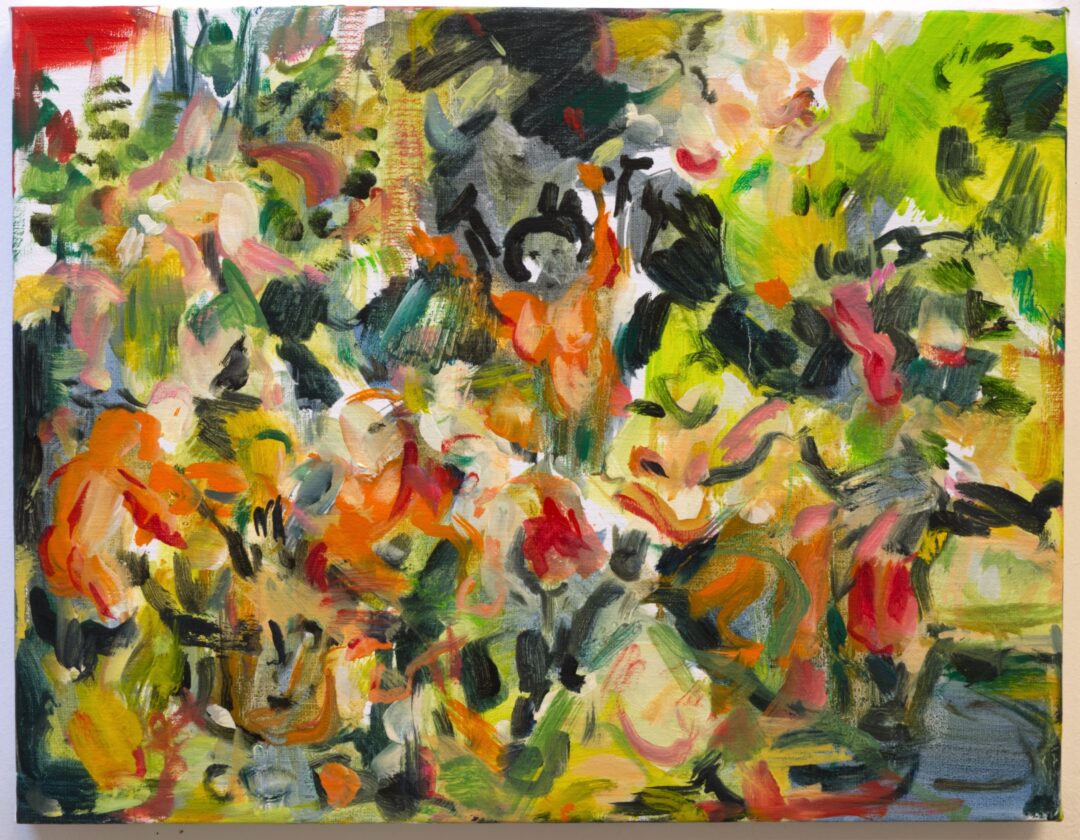
How do you react to activist art?
Art can promote social change and point to what is outdated or rotten in the world we live in. However, I think that the term activist art is misleading. It sounds as if there is a certain type of art that serves social causes, and that there is a particular form that this type of art takes. I believe that any art form can promote a cause whether it is documentary film, performance art, or painting.
* Interview by Dora Trogadi
Intro photos: Left: The artist (Photo by Anna Psaroudakis) Right: She Danced Away
TAGS: ARTS

